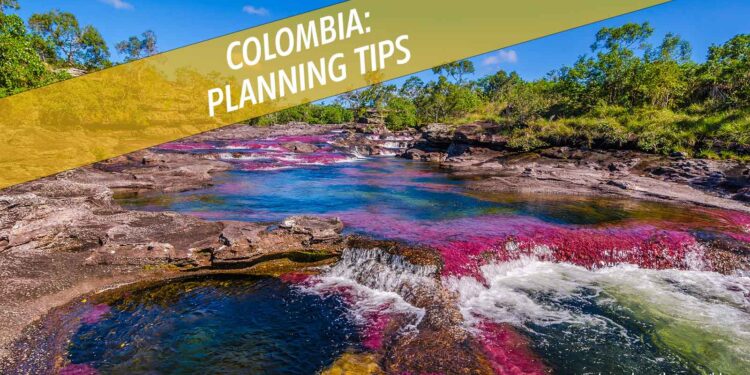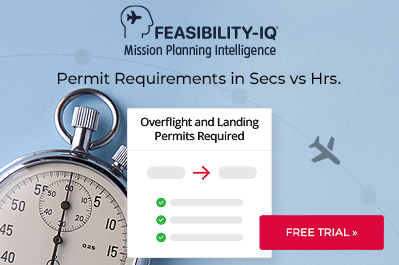Operating to Colombia – Part 3: Planning Tips

This business aviation blog post continues from our article last week, entitled “Operating to Colombia – Part 2: Permit Considerations.”
Authorities in Colombia are strict on documentation requirements governing business jet operations in the country, so if you are operating there, make sure all required information/documentation are provided. Also, it’s important to ensure passengers and crew have required visas and sufficient validity on passports to cover length of stay.
The following is an overview of what you need to know:
1. Flight plan filing
At some Colombian airports, the pilot in command (PIC) must go to the airport flight plan office to present documentation and sign the flight plan. In these cases, a photo will be taken of the PIC prior to the departure clearance being approved. At Bogota (SKBO) and Cartagena (SKCG), ground handlers are permitted to take the original documents to the flight planning office, and the PIC does not need to personally visit the office. Always determine flight planning requirements, in advance, for all planned destinations in Colombia.
2. CIQ clearance
Customs, immigration, and quarantine (CIQ) procedures differ in Colombia, depending upon the airport. The general CIQ procedure is for passengers/crew to clear in the main commercial terminal. Meanwhile, luggage will be offloaded and placed beside the aircraft so that antinarcotics police officers with canine units can do an inspection. CIQ and luggage clearance in Colombia generally involves about 20 minutes. Documentation required upon arrival includes arrival/departure cards for each passenger/crew, along with at least five copies of the gen dec.
3. Visa mandates
Passengers who are U.S. citizens or U.S. permanent residents do not require visas to stay in Colombia for up to 180 days. They must, however, be listed on the gen dec. Crewmembers who are U.S. citizens or U.S. permanent residents do not need visas for stays in Columbia of 72 hours or less, but they must also be listed on the gen dec. For other nationalities it’s recommended to confirm visa requirements, in advance, with your 3rd-party or visa provider. Visas on arrival are possible in Colombia – depending upon nationality. However, this process requires advance arrangement and is subject to CIQ approval.
4. Health considerations
Although vaccinations aren’t required to enter Colombia from any country, there are recommended health measures to consider. Yellow fever vaccination is advised if you’ll be traveling to the middle valley of the Magdalena river, the eastern or western foothills of the Cordillera Oriental from the frontier of Ecuador to Venezuela, the foothills of the Sierra Nevada range, the eastern Orinoquia plains, and the Amazon river basis areas. If you plan to visit these areas it’s best to have a yellow fever vaccination, as other countries may consider Colombia endemic and may not permit you to enter their country without proof of vaccination. Malaria risks are high throughout the year in rural/jungle areas below 800 meters elevation. Travelers to these non-urban areas should consider taking malaria prophylaxis. Check with your health care specialist on the best malaria prevention medications, based on the regions you’re visiting, as certain strains of malaria are resistant to particular medications.
5. Smaller domestic airports
While foreign registered aircraft seldom travel to domestic airfields in Colombia, these smaller locations are open to operations. Cabotage is not generally an issue in Colombia for either private non-revenue or charter operations of foreign registered aircraft. It’s important to note that if you’re making more than one stop within Colombia – to clear at an airport of entry (AOE) and then proceed to a domestic airfield – you’ll need a Colombian landing permit. For smaller domestic locations it’s best to check in advance on ground handling availability and services. Best practice is to allow 72 hours lead time when operating to domestic airports in Colombia. This will give you sufficient time to arrange a landing permit and to confirm aircraft service requests. At some more remote locations it may be advisable to reposition a handling agent in from one of the larger airports. While there are costs involved in repositioning an agent, he or she will meet your aircraft, deal with any language barriers, and help ensure all services are coordinated and obtained.
6. Hotel options
Major international hotel chains are available at larger cities in Colombia, but the selection of international brands is somewhat limited. At smaller locations, you’ll have fewer options, in terms or 4- or 5-star major international chain hotels, so it’s important to review available options with your 3rd-party provider early in the trip planning process.
7. Additional reading: Operating to Colombia – Series Index
Note: Links will be updated as articles are published.
Conclusion
Anticipate additional operating and pre-planning challenges when traveling to smaller locations and/or domestic airfields in Colombia. Language barriers may be encountered and your options in terms of hotel accommodations and local transport may be more limited.
Questions?
If you have any questions about this article or would like assistance planning your next trip to Colombia, contact me at markhudson@univ-wea.com.




